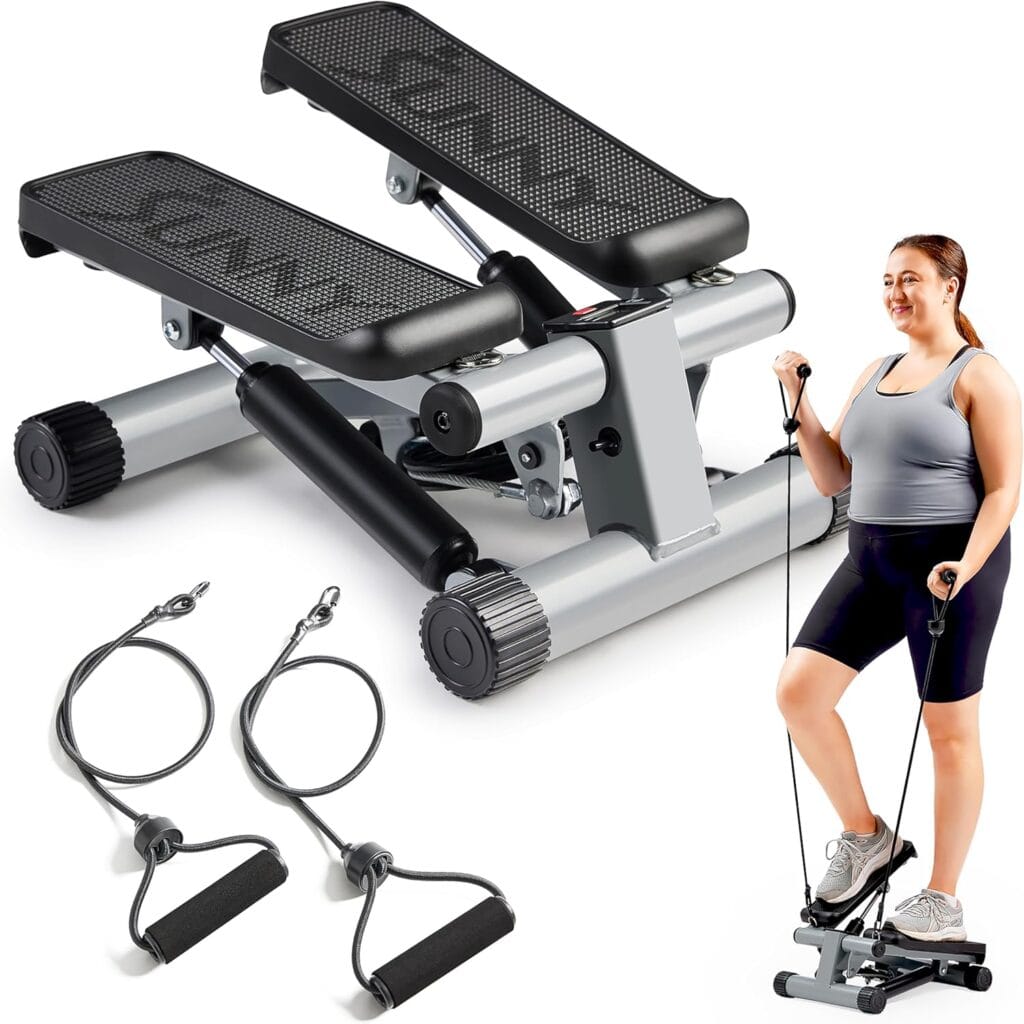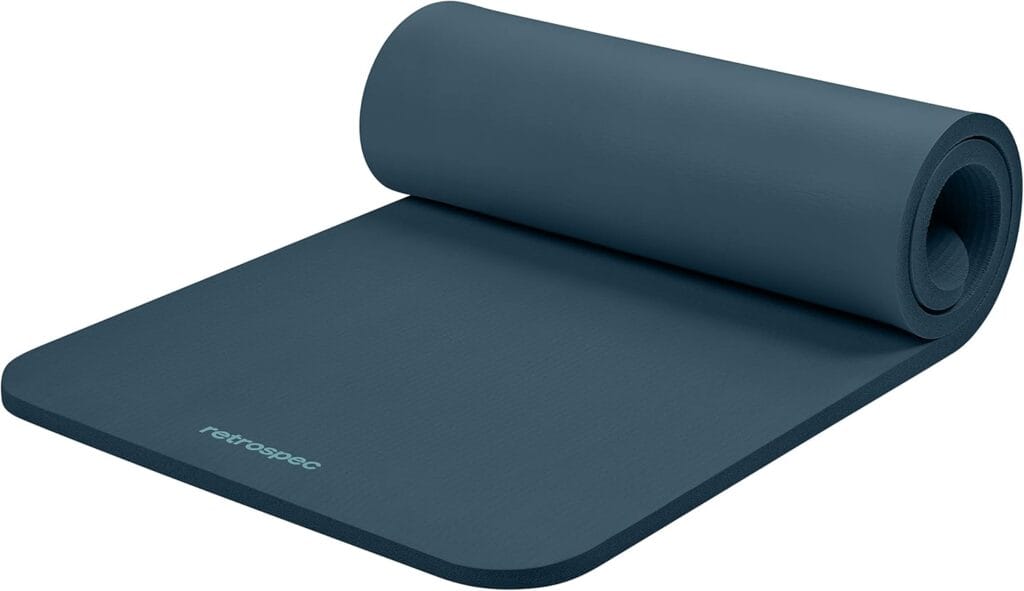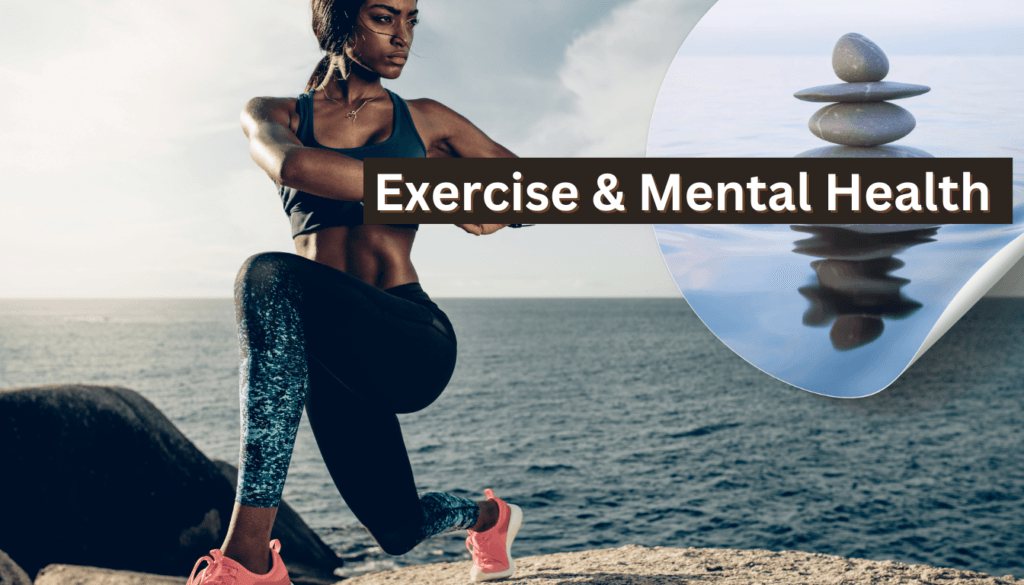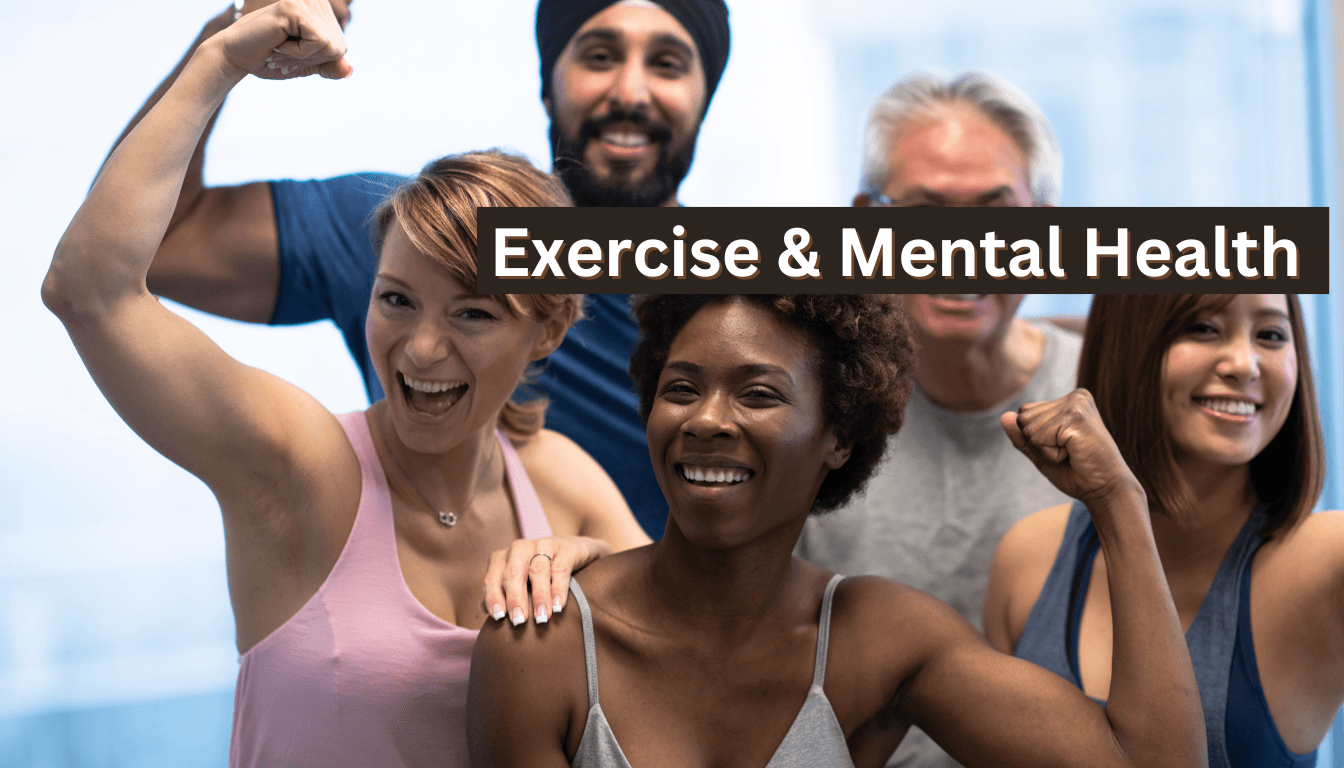Reduce Stress! Reduce Anxiety! |The Mind-Body Connection Unveiled
In the hustle and bustle of modern life, we often just want to relax a bit and wonder how to reduce stress and anxiety. Well what if I told you that you should simply exercise. Sound to easy right? But every step you take, every weight you lift, and every yoga pose you hold is actually a powerful intervention for your mental health?
Exercise isn’t just about building muscle or losing weight; looking good or getting stronger – it’s a powerful tool that can transform both body and mind. Think of physical activity as a secret weapon against stress, anxiety, and depression. When you move, neurons start firing, and your entire mental ecosystem begins to shift.
This isn’t just feel-good talk – there is serious science to this which shows that our physical movements and emotional well-being are deeply connected
Understanding Neurochemical Responses to Exercise
Endorphin Release: Your Body’s Natural Mood Elevator
Have you ever experienced that really good feeling after a good workout? That’s not just imagination—it’s science in action. When you exercise, your body releases a cocktail of feel-good chemicals called endorphins, (n-dor-fins) that can up your mood in minutes. These endorphins are biochemical agents designed to improve how your brain works, all because you have just exercised.
Endorphins and the Mind-Body Connection
Endorphins interact with certain parts of the brain to reduce your ability to feel pain and create a sense of happiness. But exercise doesn’t stop at endorphins. Chemical messengers in the brain, such as serotonin (seh-rah-tone-in) and dopamine, (dope-a-mean) also increase when you workout. These neurotransmitters (new-row-transmitters) are responsible for joy, motivation, and relief you feel after your exercise.
Dopamine gets you motivated, increases your sense of pleasure, and helps keep your emotions in check. Meanwhile, serotonin—known as the “happiness chemical”— acts as a natural remedy for depression and anxiety.

Exercise isn’t just about building muscle or losing weight; looking good or getting stronger – it’s a powerful tool that can transform your mental outlook. Think of physical activity as a secret weapon against stress, anxiety, and depression. Get started with your exercise with this Under Desk Elliptical Machine, Ellipse Leg Exerciser as Seen on Tv for Seniors Adults Quiet & Portable Seated
👉 Amazon Best Seller. Get it Now!
Exploring Exercise Types and Their Mental Health Benefits
Different types and intensities of exercise offer unique mental health benefits by triggering varying levels of endorphin production. A brisk 30-minute walk can cause a mild mood boost, while high-intensity interval training (HIIT) can produce a more pronounced “runner’s high” effect.
Cardiovascular exercises like running or cycling can be like a reset button for your brain. Strength training acts like a confidence builder, helping you feel more powerful both physically and mentally; while mind-body practices, such as yoga or tai chi , work like a gentle emotional massage, relieving stress and calming anxiety.
Stress Reduction Through Exercise
Physical activity is a powerful stress management tool.
Exercise helps balance cortisol, the primary stress hormone. Regular physical activity can lower overall cortisol levels, making it easier for you to bounce back from daily challenges. Cortisol also causes fat storage, so reducing it is good for overall metabolic health as well.
Consistent exercise also trains your body to manage stress more effectively, improving your overall emotional adaptability.
Aerobic Exercise: A Workout for Your Brain
Aerobic exercise, often referred to as “cardio,” is more than just a physical workout. It’s a powerful tool that can significantly enhance cognitive function, mood, and overall well-being. Exercises like walking, jogging, or swimming improve not just physical health but also mental clarity and emotional stability.
Physical Benefits of Aerobic Exercise
- Improved Cardiovascular Health: Regular aerobic exercise strengthens the heart and lungs, reducing the risk of heart disease, stroke, and other cardiovascular conditions.
- Weight Management: Cardio helps burn calories, helping you to lose weight and keep it off.
- Boosted Energy Levels: Increased physical activity can lead to higher energy levels throughout the day.

👉 Cardio, short for cardiovascular exercise, is any physical activity that raises your heart rate and improves the efficiency of your heart, lungs, and circulatory system. It includes activities like running, cycling, swimming, and brisk walking. Cardio helps burn calories, improve endurance, strengthen the heart, and boost overall health by reducing the risk of conditions like heart disease, high blood pressure, and diabetes. Elevate Your Home Workouts with ‘Sunny Health’ Mini Stepper. Available now on Amazon
Mental Benefits of Aerobic Exercise
- Enhanced Mood: Aerobic exercise stimulates the release of endorphins, natural mood elevators that can combat stress, anxiety, and depression.
- Improved Brain Function: Regular cardio can enhance memory, attention, and problem-solving skills. It can even slow cognitive decline as individuals age.
- Reduced Stress: Physical activity helps reduce stress hormones like cortisol, promoting relaxation and better sleep.
- Boosted Self-Esteem: Achieving fitness goals can boost self-confidence and self-worth.
How Aerobic Exercise Works
Aerobic exercise increases blood flow to the brain, delivering essential oxygen and nutrients. This increased blood flow stimulates the growth of new brain cells and strengthens existing neural connections. Additionally, the release of endorphins can improve mood and reduce stress, creating a positive feedback loop that benefits both physical and mental health.
Strength Training: Building Confidence, Not Just Muscles
Beyond physical strength, weight training enhances the way you think about yourself:
Strength training, often associated with bulging muscles and grunts in the gym, offers far more than just physical benefits. It’s a powerful tool for building confidence, empowering you to conquer challenges both inside and outside the weight room.
The Physical Transformation:
- Sculpted Physique: Strength training helps you build lean muscle mass, giving you a toned and defined physique.
- Boosted Metabolism: More muscle means a higher metabolism, helping you burn calories even at rest.
- Enhanced Performance: Stronger muscles improve athletic performance, making everyday activities easier and more enjoyable.
The Mental Makeover:
- Stress Reduction: Physical activity releases endorphins, natural mood elevators that combat stress and anxiety.
- Increased Self-Esteem: Achieving fitness goals boosts your confidence and self-worth.
- Improved Focus: Regular exercise sharpens your mind, enhancing concentration and problem-solving skills.
- Enhances the brains ability to learn
The Confidence Catalyst
- Empowerment: Mastering challenging exercises gives you a sense of accomplishment and control.
- Positive Body Image: Strength training promotes a healthier body image, focusing on what your body can do, not just how it looks.
- Resilience Building: Overcoming challenges in the gym translates to greater resilience in life’s obstacles.
- Social Connection: Joining a gym or fitness community fosters friendships and support, further boosting confidence.
Remember, strength training isn’t just about lifting weights. It’s about pushing personal limits, embracing progress, and celebrating achievements. Whether you’re a seasoned gym-goer or a beginner, the journey to a stronger, more confident you starts with the first step into the weight room.
Mind-Body Practices : The Holistic Approach
Yoga and meditation are powerful tools that can significantly enhance your overall well-being. When practiced together, they work hand in hand, complementing and reinforcing each other to benefit both your physical and mental health.

Elevate Your Yoga Practice with Solana.
👉 Experience ultimate comfort and stability with our extra-thick, non-slip yoga mat. Perfect for all levels, Solana is designed to alleviate pressure on joints and enhance your practice. 👉 Get yours today from Amazon
Physical Benefits:
- Increased Flexibility: Yoga poses, or asanas, stretch and lengthen your muscles, improving your flexibility and range of motion. Regular practice can alleviate stiffness and reduce the risk of injuries.
- Enhanced Strength: Many yoga poses require you to hold your body weight, which strengthens your muscles, particularly in your core, back, and legs.
- Improved Balance and Posture: Yoga poses often involve balancing on one leg or hand, which challenges your balance and coordination. Over time, this practice can improve your posture and reduce back pain.
- Boosted Immunity: Regular yoga practice can stimulate your lymphatic system, which plays a crucial role in removing toxins from your body and boosting your immune function.
Mental Benefits:
- Reduced Stress and Anxiety: Meditation, a core component of yoga, involves focusing your attention on your breath or a specific object. This practice can calm your mind, reduce stress, and alleviate anxiety symptoms.
- Improved Focus and Concentration: Regular meditation can enhance your ability to focus and concentrate, making it easier to stay on task and improve your productivity.
- Enhanced Emotional Well-being: Yoga and meditation can help you develop a deeper understanding of your emotions and cultivate a more positive outlook on life. They can also help you manage negative emotions like anger, frustration, and sadness.
- Better Sleep Quality: Practicing yoga and meditation before bed can help you relax your body and mind, leading to improved sleep quality and a more restful night’s sleep.
How Yoga and Meditation Work Together:
In Summary, yoga provides physical exercise, which can release endorphins, natural mood boosters. Meditation, on the other hand, calms your mind and helps you connect with your inner self. When combined, they create a holistic approach to well-being that addresses both your physical and mental needs.
Practical Strategies for Mental Health Through Exercise
Starting an exercise routine doesn’t mean becoming an instant fitness guru. It’s about making small, consistent choices that gradually build your mental and physical strength. Think of it like planting a garden – you don’t need to create a masterpiece overnight, just plant a few seeds and nurture them consistently.
Consider your personal preferences and limitations. Not everyone enjoys the gym, and that’s okay! Dancing in your living room, taking walks in nature, or following online workout videos can be just as effective. The key is finding movement that feels good and doesn’t feel like a punishment.
The Scientific Backing
Numerous studies validate the exercise-mental health connection. A landmark analysis published in the Lancet Psychiatry found that individuals who exercise regularly experience 43% fewer days of poor mental health compared to sedentary individuals.
Researchers have found that physical activity can be as effective as some medications in managing mild to moderate depression. This doesn’t mean exercise is a cure-all, but it’s a powerful tool in maintaining mental wellness.

Making Exercise Work for Your Mental Health
Your journey is not going to be the as anyone else’s, and exercise needs to be approached with sensitivity and understanding. It’s about finding what works for you, not following a one-size-fits-all plan. Consider working with professionals who understand both exercise and mental health.
A therapist, counselor, or specialized fitness trainer can help if you are managing conditions like anxiety or depression . They can provide personalized guidance that takes into account your individual challenges and strengths.
Getting Started
- Start small: 15-20 minute sessions
- Choose activities you genuinely enjoy
- Create a consistent routine
- Track your progress and mood
Addressing Common Barriers
- Lack of time? Try high-intensity, short-duration workouts
- Low motivation? Find an accountability partner
- Limited resources? Utilize free online workout resources
Special Considerations
For individuals managing specific mental health challenges:
- Anxiety: Focus on rhythmic, predictable exercises
- Depression: Start with low-intensity activities
- Chronic stress: Prioritize mind-body practices like yoga
When to Seek Professional Guidance
While exercise is a powerful mental health tool, it’s not a substitute for professional treatment. Consult a mental health professional if:
- Your symptoms persist or worsen
- You experience significant mood fluctuations
- Exercise doesn’t seem to provide relief
Your Mental Health, Your Journey
Exercise is more than just physical movement – it’s a form of self-care and emotional maintenance. It is a profound, scientifically-backed strategy for mental wellness. It’s not about perfection but consistent, intentional compassionate effort (be gentle on yourself). Every step, every stretch, every moment of physical activity is an investment in your mental health
Remember, your mental health journey is uniquely yours. Some days will be easier than others, and that’s completely okay. The goal is progress, not perfection. Start small, be kind to yourself, and celebrate every single effort you make towards better mental health.
Get going today. Your mind will thank you.
END





